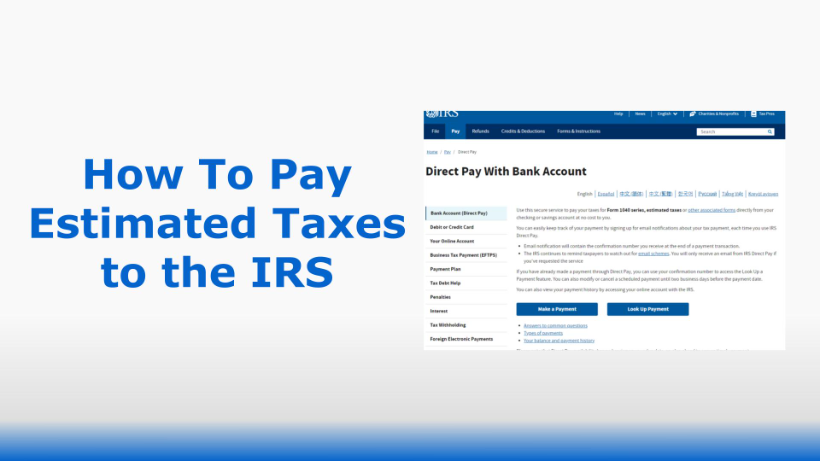Which Tax Form Should You File?
Published:Prepare your tax return at E-file.com
File your IRS taxes online quickly & accurately in just minutes with E-file.com.
Federal Tax Returns Have Undergone Several Changes Over the Past Few Years
There used to be several different versions of the federal individual income tax return (Form 1040) that were meant for taxpayers with different needs/situations.
The Tax Cuts and Jobs Act of 2017 included a provision for a new, redesigned Form 1040 tax return. The new version was released for tax year 2018 that is much shorter than the previous tax form – the number of lines was reduced from 79 to 23, two of the variants (1040A and 1040EZ) were removed in favor of the newly redesigned Form 1040, and the supplemental schedules were also redesigned.
Now there is a shorter, simpler Form 1040 with only one main variation – Form 1040-SR, for senior citizens.
Form 1040
Form 1040 (U.S. Individual Income Tax Return) is the annual federal tax return that most individuals are required to file each April.
The simplified Form 1040 consolidates the three older versions of the 1040 return (Forms 1040, 1040A, and 1040EZ) into one form. The new 1040 form is basically two half-pages. The first page (i.e. the front of the form) is mainly for personal information – such as your name, Social Security Number (SSN), address, and dependents – and your income and deductions. The second page (i.e. the back of the form) is where you claim tax credits and enter tax refund information.
Here are 5 things the IRS says taxpayers need to know about Form 1040:
- The new Form 1040 replaces Forms 1040,1040A and 1040EZ with one Form 1040 that all taxpayers will file.
Forms 1040A and 1040EZ are no longer available. Taxpayers who used one of these forms in the past will now file Form 1040.
The new Form 1040 uses a “building block” approach and allows taxpayers to add only the schedules they need to their tax return.
The most commonly used lines on the prior year form are still on the form. Other lines are moved to new schedules and are organized by category. These categories include income, adjustments to income, nonrefundable credits, taxes, payments, and refundable credits.
Many taxpayers will only need to file Form 1040 and no schedules. Those with more complicated tax returns will need to complete one or more of the 2018 Form 1040 Schedules along with their Form 1040. These taxpayers include people claiming certain deductions or credits, or owing additional taxes.
Form 1040-SR
Form 1040-SR (U.S. Tax Return for Seniors) is the annual federal tax return that individuals who are age 65 or older can choose to file as an alternative to using Form 1040. Note that Form 1040-SR uses the same schedules and instructions as the regular Form 1040 does.
RELATED: Which Tax Form to File Now That 1040A and 1040EZ Are No Longer Used
The Old Tax Returns: Form 1040, Form 1040A, and Form 1040-EZ
The 1040 series of federal income tax forms were the starting point for personal federal income tax returns. There were three different versions of these federal income tax forms: the original 1040, the slightly less complicated 1040A, or the simple 1040EZ.
Tax Form 1040EZ
The 1040EZ is known as the “easy” form in the 1040 series. You can use Form 1040EZ if all of the following apply to you:
- Your filing status is “single” or “married filing jointly”
- You claim no dependents
- You, and your spouse if filing a joint return, were under age 65 (as of January 1, 2016)
- You, and your spouse if filing a joint return, are not blind (as of December 31, 2015)
- Your taxable income is less than $100,000
- You claim no adjustments to your income
- You claim no credits except the Earned Income Tax Credit (EIC)
- You had only wages, salaries, tips, taxable scholarship or fellowship grants, unemployment compensation, or Alaska Permanent Fund dividends
- Your taxable interest did not exceed $1,500
- You did not receive advanced Earned Income Credit payments
- Your earned tips, if any, are included in boxes 5 and 7 of your Form W-2
- You do not owe any household employment taxes on wages you paid to a household employee
- You are not a debtor in a Chapter 11 bankruptcy case filed after October 16, 2005
- Advance payments of the premium tax credit were not made for you, your spouse, or any individual you enrolled in coverage for whom no one else is claiming the personal exemption
If you meet all of the above criteria, you can use Form 1040EZ as your income tax return. You may also be eligible to file Form 1040EZ online for free.
Otherwise, you may qualify to use the next simplest form in the 1040 series – Form 1040A.
Tax Form 1040A
This is a shortened version of the regular 1040. Form 1040A is designed for taxpayers whose taxable income is less than $100,000 and meet certain other requirements.
If you do not meet the criteria to use Form 1040EZ, you may be able to use Form 1040A if the following apply to you:
- Your only income is from wages, salaries, tips, interest, ordinary dividends, capital gain distributions, taxable scholarships and fellowship grants, pensions, annuities, IRAs, unemployment compensation, Alaska Permanent Fund dividends, and taxable social security or railroad retirement benefits
- Your only adjustments to income are the IRA deduction, the student loan interest deduction, the educator expenses deduction, and the tuition and fees deduction
- You do not claim itemized deductions
- Your taxable income is below $100,000
- You are only claiming certain tax credits (including the credit for child and dependent care expenses, the credit for the elderly or the disabled, education credits, the retirement savings contributions credit, the child tax credit, the additional child tax credit, the earned income credit, and/or the premium tax credit)
- You did not have an Alternative Minimum Tax (AMT) adjustment on stock you acquired from the exercise of an incentive stock option
You may also be able to use Form 1040A if you received dependent care benefits or if you owe tax from the recapture of an education credit or the Alternative Minimum Tax (AMT).
If you do not meet the above requirements for Form 1040A, you will need to use the “long form” 1040 instead.
Tax Form 1040
Form 1040 is known as the “long form” and can be filed by anyone who doesn’t qualify to use Form 1040EZ or Form 1040A.
There are certain cases where you are required to use Form 1040 as your income tax return, including the following:
- Your taxable income is $100,000 or greater
- You have certain types of income (such as business or farm self-employment income; unreported tips; dividends on insurance policies that exceed the total of all net premiums you paid for the contract; or income received as a partner, a shareholder in an S corporation, or a beneficiary of an estate or trust)
- You itemize deductions
- You claim certain tax credits or adjustments to income
- You owe household employment taxes
These federal income tax forms can generally be found in your local library and post office. Or, like millions of taxpayers, you can save yourself the hassle and file online.



